#assamese attire
Photo

Assamese girls and boys in traditional attire carry Indian flags as they perform the Bihu dance on Independence Day in Guwahati, Assam. [Anupam Nath/AP Photo]
15 notes
·
View notes
Text
Traditional Assamese Wedding Sarees | Indian Silk House Exclusives

Explore the timeless elegance of Assamese wedding sarees at Indian Silk House Exclusives. Our collection showcases the rich heritage and intricate craftsmanship of Assam's traditional attire, perfect for your special day. Each saree is a masterpiece, handwoven with love and dedication, reflecting the cultural ethos of Assamese weddings. Adorn yourself in the vibrant colors and exquisite motifs that signify the beauty of Assamese culture. Shop now at Indian Silk House Exclusives to find the perfect Assamese wedding saree that captures the essence of your celebration. Experience the luxury of tradition with our exclusive collection, curated just for you.
0 notes
Text
7 Hidden Items for Traditional Indian Wedding
In the grand tapestry of Indian weddings, every element holds a significance deeply rooted in tradition and symbolism. While the spotlight often shines on the bride, groom, and the elaborate ceremonies, there exist hidden treasures, each carrying its own sacred meaning.
At Sparkling Vows, we understand the importance of these hidden items and how they add layers of richness to the wedding celebrations.
Let's embark on a journey to uncover seven such hidden gems that elevate the charm of a traditional Indian wedding.
1. Mangalsutra:
Tucked away in the bride's jewelry box, the mangalsutra is a sacred necklace symbolizing marital commitment and unity. Crafted with intricate designs and adorned with black beads, it is believed to protect the couple from evil and ensure a blissful union.
2. Sindoor:
This vibrant red powder, hidden within the groom's attire, holds immense significance as it symbolizes the bride's status as a married woman. The moment the groom applies sindoor on the bride's hair parting during the wedding ceremony, it marks the beginning of their lifelong bond.
3. Saath Pheras:
Amidst the elaborate rituals of a Hindu wedding, lies the sacred custom of the Saath Pheras or the seven vows. Hidden within these vows are promises of love, respect, and companionship exchanged between the bride and groom as they circle the holy fire, symbolizing their eternal bond.
4. Bidaai Kiran:
As the wedding festivities draw to a close, a tearful yet joyous moment unfolds during the bidaai ceremony. Hidden amidst the emotions is the bidaai kiran, a symbol of hope and blessings bestowed upon the bride as she bids farewell to her family and embarks on a new journey with her husband.
5. Kalash:
Deeply rooted in Hindu rituals, the kalash symbolizes abundance, fertility, and prosperity. Often hidden within the elaborate wedding decor, the kalash holds sacred water and is adorned with mango leaves and a coconut, representing purity and fertility.
6. Moi Virama:
A hidden gem within Assamese weddings, the moi virama ceremony marks the end of the wedding rituals. Hidden behind closed doors, the bride's family offers gifts and blessings to the newlyweds, symbolizing their acceptance into the groom's family.
7. Henna Designs:
Adorning the bride's hands and feet with intricate henna designs is a cherished tradition in Indian weddings. Hidden within these intricate patterns are symbols representing love, prosperity, and blessings for the bride's future.
At Sparkling Vows, we celebrate the beauty of tradition and the significance of every hidden item that adds to the splendor of a traditional Indian wedding.
With meticulous attention to detail and reverence for customs, we ensure that every moment is imbued with meaning and magic, making your special day truly unforgettable.
0 notes
Text
Sankranti Glam: Unleash Your Style with Samyakk's Ethnic Outfits
Makar Sankranti, a significant festival in India, is celebrated to mark the transition of the sun into the zodiac sign of Capricorn. On this important day that holds a special place in our calendar, people all over the country celebrate with excitement and enthusiasm. The festival, known by various names in different regions, holds cultural and historical significance and is celebrated with diverse traditions.
Festive Kaleidoscope: Makar Sankranti’s Cultural Symphony Across India

Makar Sankranti is celebrated with diverse traditions across India, each state bringing its unique charm to the festivities.
In Punjab, it’s celebrated as Lohri, marked by bonfires and vibrant folk dances. People wear colorful Phulkari designer suits, celebrating with bhangra and gidda.
In Gujarat, Uttarayan is celebrated with kite flying, and women adorn themselves in vibrant chaniya cholis.
In Tamil Nadu, signifies the culmination of the harvest season with families coming together to cook the traditional dish ‘Pongal’ and express gratitude for abundance. Pongal involves traditional attire like Pattu Pavadai for women and Veshti for men.
Assam celebrates Magh Bihu, known for community feasts, traditional dances like Bihu, and lighting of Mejis (bonfires). Women wear traditional Assamese attire, the Mekhela Chador, characterized by elegant silk or cotton drapes, while men don Gamosas, traditional handwoven scarves.
These celebrations showcase India’s cultural diversity through distinctive outfits and rituals during Makar Sankranti.
Why is Makar Sankranti Celebrated?
Solar Transition Celebration:
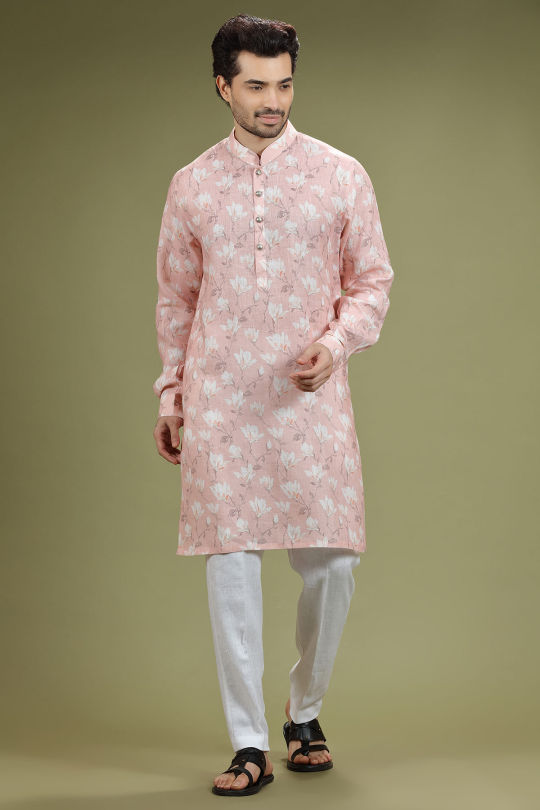
Makar Sankranti marks the end of the winter solstice and the beginning of longer days. As the sun starts its northward journey, symbolizing the arrival of warmer days, the festival signifies the triumph of light over darkness. The word “Makar” refers to the zodiac sign Capricorn, and “Sankranti” signifies the sun’s transition.
Cultural and Harvest Celebrations:
The festival is also closely linked to agrarian traditions, marking the onset of the harvest season. Farmers express gratitude for the bountiful crops and pray for a prosperous agricultural year ahead. The festival fosters a sense of community as people come together to celebrate the abundance of nature.
History of Makar Sankranti:
Ancient Roots:
Makar Sankranti has ancient roots and finds mention in various Hindu scriptures. It is believed that the celebration has been observed for thousands of years, dating back to the Vedic period. The festival is not only a time for religious observances but also a way to celebrate the cyclical nature of the sun and its impact on agriculture.
Religious Significance:
In Hindu mythology, the day of Makar Sankranti is associated with significant events. It is believed that on this day, Lord Surya (the Sun God) visits the house of his son Shani (Saturn), signifying the end of their differences. Devotees take holy dips in rivers and visit temples to offer prayers, seeking blessings for prosperity and well-being.
Special Food During Makar Sankranti:
Sesame and Jaggery Delicacies:
One of the hallmark features of Makar Sankranti is the consumption of sesame and jaggery-based sweets. Til ladoos (sesame seed sweet balls) and gur (jaggery) are often used to prepare various traditional delicacies like til chikki, gajak, and rewri. These foods are not only delicious but also hold nutritional significance, providing warmth during the winter season.
Pongal in South India:
In South India, particularly in Tamil Nadu, the festival is celebrated as Pongal. The signature dish, also called Pongal, is a special rice dish cooked with newly harvested rice, lentils, and jaggery. The act of boiling over of milk during the cooking process is considered auspicious and symbolizes abundance.
Kite Flying Tradition:
Symbolism and Tradition:
One of the most cherished traditions during Makar Sankranti is kite flying. The sky becomes a canvas for colorful kites, creating a breathtaking spectacle. The tradition of flying kites symbolizes breaking free from the past and soaring high with new aspirations. It is believed that the higher the kite flies, the closer it gets to the divine.
Kite Festivals:
Across India, various states organize kite festivals during Makar Sankranti, attracting participants from all walks of life. Cities like Ahmedabad in Gujarat are particularly renowned for their International Kite Festival, where the sky is adorned with kites of all shapes, sizes, and colors. These festivals promote community spirit and friendly competition among participants.
The Allure of Tradition:
Beyond the religious and cultural significance, this festival also provides a unique opportunity to showcase and celebrate India’s diverse fashion heritage. In recent times, the fusion of tradition and modernity has given rise to a trend that blends not only the classic charm of Sarees and Lehengas but also the ethnic allure of designer salwar suits and men’s designer kurtas, creating a fashion statement that resonates with the spirit of Makar Sankranti.
Saree Swagger:
Modern Drapes:
The saree, a timeless piece of clothing, has undergone a remarkable transformation in recent times. Traditionally associated with grace and elegance, the saree has now become a symbol of empowerment and style. The trend of ‘Sari Swagger’ encapsulates the fusion of tradition and modernity, as young individuals experiment with drapes, fabrics, and accessories to redefine the saree’s narrative.
Contemporary Draping Styles:
Traditional designer saree drapes like the Nivi style or the Bengali drape are being reinvented with modern twists. Experimental pleats, quirky twists, and unconventional pallu placements have become a common sight, allowing wearers to express their creativity and individuality.
Fabric Innovation:
The traditional silk sarees are making way for lightweight fabrics like georgette, chiffon, and organza. These fabrics not only enhance comfort but also provide a fresh and breezy look. Handloom sarees from different states are gaining popularity, promoting the rich craftsmanship of Indian weavers.

‘Sari Swagger’ is all about blending cultural influences. The fusion of designer fancy sarees with contemporary designer silk blouses, jackets, or even belts is becoming increasingly common. This blend of traditional and modern elements reflects a dynamic and evolving cultural identity.
Statement Blouses:
The blouse, once a modest accompaniment to the saree, has now become a canvas for artistic expression. Elaborate embroidery, intricate patterns, and bold designs transform the blouse into a statement piece that complements the elegance of the saree.
Contemporary Jewellery:
Traditional jewellery is being reimagined with a modern twist. Kundan, Polki, and temple jewellery are now paired with contemporary designs to create a fusion that effortlessly combines the old and the new.
Footwear Trends:
The choice of footwear plays a crucial role in completing the ‘Sari Swagger’ look. While traditional juttis and mojaris are timeless, contemporary styles like embellished sandals and block heels are gaining popularity, adding a modern edge to the overall appearance.
Lehenga Love:
Experimenting with Silhouettes:
Lehengas, traditionally associated with weddings and special occasions, are now finding a place in the wardrobes of fashion-conscious women for festive events like Sankranti. The ‘Lehenga Love’ trend focuses on experimenting with traditional silhouettes.
Asymmetrical Cuts:
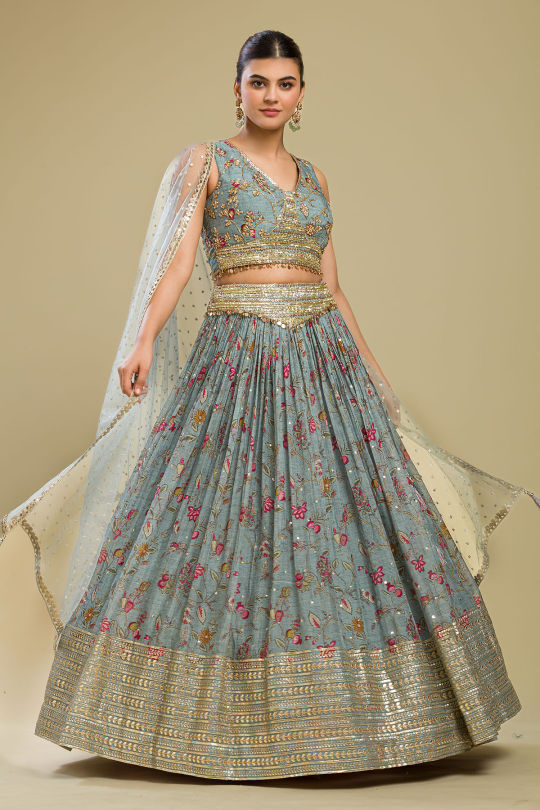
Designer Lehengas are no longer confined to the traditional A-line or flared silhouette. Contemporary designers are experimenting with asymmetrical cuts, mermaid styles, party wear designer lehenga and designer silk jacket lehengas. This experimentation adds a modern touch to the traditional ensemble.
Vibrant Colors and Embellishments:

Makar Sankranti is a festival of colors, and this is reflected in the choice of lehenga colors. Vibrant hues such as mustard, turquoise, and emerald green dominate the designer festive lehenga palette. Intricate embellishments like mirror work, zari, and thread embroidery further elevate the festive vibe.
Salwar Suits for Women:
Comfort and Elegance:

Salwar suits continue to be a popular choice for women during Makar Sankranti festivities. Known for their comfort and elegance, these outfits provide a perfect blend of tradition and modernity. Lightweight fabrics and vibrant colors make designer salwar suits ideal for both religious rituals and festive gatherings.
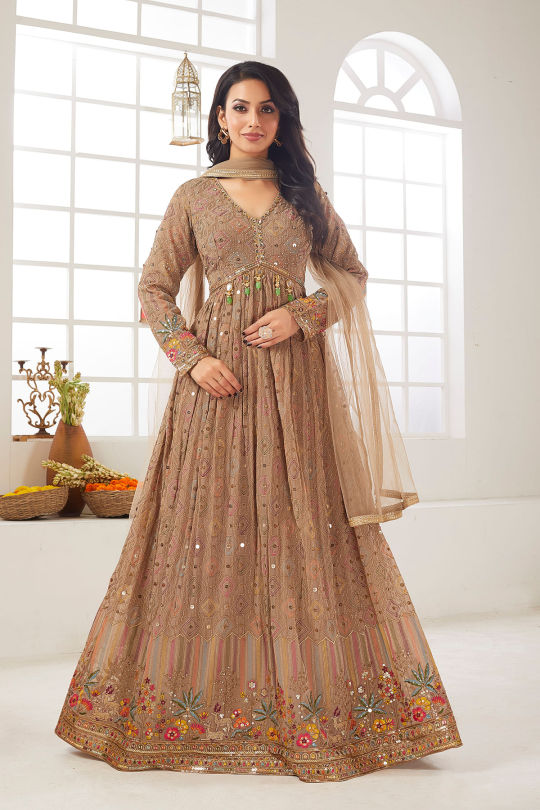
The versatility of festive salwar suits allows for a myriad of designs. From traditional Anarkali suits to contemporary straight-cut suits, designer sharara suit, designer palazzo suits, women can choose styles that suit their preferences. Embroidery, sequins, and mirror work add a festive touch, making salwar suits a go-to option for Makar Sankranti celebrations.
Fusion Styling:
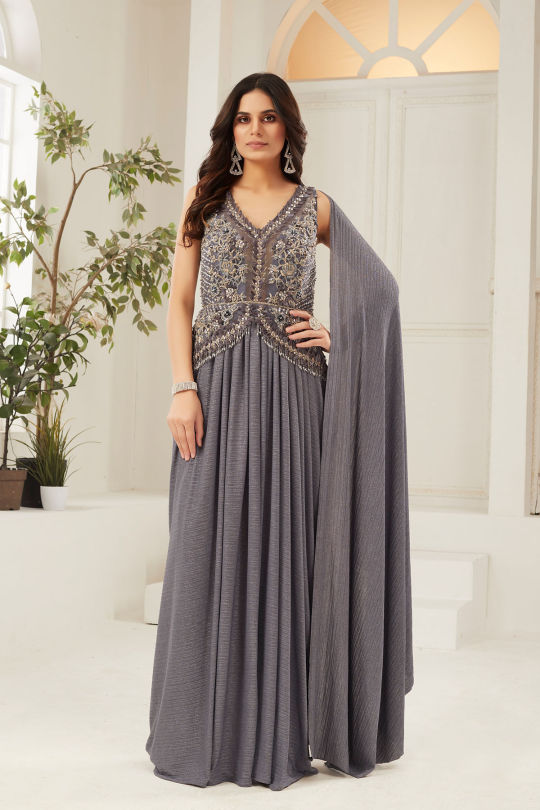
Embracing the trend of fusion fashion, women often pair their ethnic salwar suits with modern accessories. Statement earrings, embellished juttis, or even a contrasting dupatta can elevate the overall look, making it a perfect choice for those who want to experiment with traditional attire.
Men’s Kurta:
Classic Elegance:
Men’s kurtas remain a classic and timeless choice for Makar Sankranti. The simplicity and elegance of a well-fitted kurta, often paired with churidars or straight pants, make it an ideal traditional ensemble. Solid colors or subtle prints are preferred, allowing men to participate in the festivities with sophistication.
Experimentation with Silhouettes:
The evolution of men’s fashion has brought about experimentation with designer kurta outfits. Asymmetrical cuts, shorter or longer lengths, and various neck patterns provide men with the opportunity to showcase their personal style while adhering to traditional aesthetics.
Incorporating Handloom Fabrics:
Handloom fabrics like khaki and silk are gaining popularity in men’s kurtas. These fabrics not only contribute to the rich cultural heritage but also add a touch of luxury to the ensemble. Handwoven details and subtle embellishments enhance the overall appeal, making the kurta a standout choice. Samyakk offers wide range of Kahki Woven Tuxedo suit, Light khaki zaro woven silk kurta, Resham Embroidered Silk Waistcoat kurta, Silk Modi jacket and Multi-color Printed Silk Kurta.
Cultural Impact:
Preserving Tradition:
The fusion of Designer Printed Sarees, Party Wear Lehengas, Plus Size salwar kameez, and men’s party wear silk kurtas during Makar Sankranti harmonizes tradition and modernity, defining vibrant festive fashion. It reflects a broader socio-cultural shift towards embracing and celebrating diversity. The amalgamation of traditional attire with modern elements not only preserves cultural heritage but also allows for a dynamic and inclusive representation of Indian identity.
Revival of Handloom and Indigenous Craft:
The revival of traditional designer outfits, handloom sarees, and ethnic embellishments in contemporary fashion promotes the preservation of cultural heritage. It encourages a sense of pride in one’s roots and contributes to the sustenance of indigenous craftsmanship.
Inclusivity in Fashion:
The acceptance of diverse styles and the breaking of gender norms in fashion demonstrate a growing awareness and acceptance of inclusivity. Fashion is becoming a platform to express individuality, irrespective of gender or cultural background.
Conclusion-
As Makar Sankranti approaches, the convergence of tradition and style takes center stage, epitomized by the fusion of Sarees and Lehengas. This auspicious festival becomes a vibrant canvas for self-expression, where individuals across India showcase a unique blend of cultural richness and contemporary dynamism through their fashion choices.
In this celebratory atmosphere, Samyakk stands as a beacon of choice, offering an extensive collection that includes Kanchipuram sarees, Banarasi sarees, Designer sarees, organza sarees, and an array of lehengas – from Designer and party wear to Bridal lehengas. The brand’s commitment to providing enticing colors, diverse fabrics, and intricate embroideries aligns seamlessly with the festive spirit of Makar Sankranti.
As kites fill the skies, Samyakk invites individuals to soar to new heights of style and individuality, making Makar Sankranti not just a festival but a celebration of fashion, culture, and personal expression.
Wish you all readers a very prosperous makar sankranit from team samyakk.
Written by,
Shaloni Rao
#Saree#sarees#sarees online#online saree shopping#Pattu saree#sarees for wedding#indian wedding sarees#wedding designer sarees#kanjivaram saree#kanjivaram sarees#Kanchipuram saree#Kanchipuram silk saree#kanchipuram saree bridal#kanjivaram saree online#kanjivaram sarees online#kanchipuram silk#kanchipuram pattu sarees#kanchipuram silk sarees#kanjeevaram saree#Kanjeevaram Silk Sarees#bridal kanjivaram saree#kanchipuram saree bride#kanchipuram silk sarees for wedding with price#kanchipuram pattu sarees for wedding#kanchi pattu sarees#kanchipuram sarees#original banarasi saree#banarasi silk sarees#pure banarasi silk saree#Banarasi Silk sarees
0 notes
Text
Sankranti Glam: Unleash Your Style with Samyakk's Ethnic Outfits
Introduction:
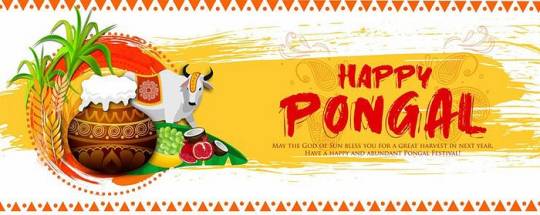
Festive Kaleidoscope: Makar Sankranti’s Cultural Symphony Across India
Makar Sankranti is celebrated with diverse traditions across India, each state bringing its unique charm to the festivities.
In Punjab, it’s celebrated as Lohri, marked by bonfires and vibrant folk dances. People wear colorful Phulkari designer suits, celebrating with bhangra and gidda.
In Gujarat, Uttarayan is celebrated with kite flying, and women adorn themselves in vibrant chaniya cholis.
In Tamil Nadu, signifies the culmination of the harvest season with families coming together to cook the traditional dish ‘Pongal’ and express gratitude for abundance. Pongal involves traditional attire like Pattu Pavadai for women and Veshti for men.
Assam celebrates Magh Bihu, known for community feasts, traditional dances like Bihu, and lighting of Mejis (bonfires). Women wear traditional Assamese attire, the Mekhela Chador, characterized by elegant silk or cotton drapes, while men don Gamosas, traditional handwoven scarves.
These celebrations showcase India’s cultural diversity through distinctive outfits and rituals during Makar Sankranti.
Why is Makar Sankranti Celebrated?
Solar Transition Celebration:
Makar Sankranti marks the end of the winter solstice and the beginning of longer days. As the sun starts its northward journey, symbolizing the arrival of warmer days, the festival signifies the triumph of light over darkness. The word “Makar” refers to the zodiac sign Capricorn, and “Sankranti” signifies the sun’s transition.
Cultural and Harvest Celebrations:
The festival is also closely linked to agrarian traditions, marking the onset of the harvest season. Farmers express gratitude for the bountiful crops and pray for a prosperous agricultural year ahead. The festival fosters a sense of community as people come together to celebrate the abundance of nature.
History of Makar Sankranti:
Ancient Roots:
Makar Sankranti has ancient roots and finds mention in various Hindu scriptures. It is believed that the celebration has been observed for thousands of years, dating back to the Vedic period. The festival is not only a time for religious observances but also a way to celebrate the cyclical nature of the sun and its impact on agriculture.
Religious Significance:
In Hindu mythology, the day of Makar Sankranti is associated with significant events. It is believed that on this day, Lord Surya (the Sun God) visits the house of his son Shani (Saturn), signifying the end of their differences. Devotees take holy dips in rivers and visit temples to offer prayers, seeking blessings for prosperity and well-being.
Special Food During Makar Sankranti:
Sesame and Jaggery Delicacies:
One of the hallmark features of Makar Sankranti is the consumption of sesame and jaggery-based sweets. Til ladoos (sesame seed sweet balls) and gur (jaggery) are often used to prepare various traditional delicacies like til chikki, gajak, and rewri. These foods are not only delicious but also hold nutritional significance, providing warmth during the winter season.
Pongal in South India:
In South India, particularly in Tamil Nadu, the festival is celebrated as Pongal. The signature dish, also called Pongal, is a special rice dish cooked with newly harvested rice, lentils, and jaggery. The act of boiling over of milk during the cooking process is considered auspicious and symbolizes abundance.
Kite Flying Tradition:
Symbolism and Tradition:
One of the most cherished traditions during Makar Sankranti is kite flying. The sky becomes a canvas for colorful kites, creating a breathtaking spectacle. The tradition of flying kites symbolizes breaking free from the past and soaring high with new aspirations. It is believed that the higher the kite flies, the closer it gets to the divine.
Kite Festivals:
Across India, various states organize kite festivals during Makar Sankranti, attracting participants from all walks of life. Cities like Ahmedabad in Gujarat are particularly renowned for their International Kite Festival, where the sky is adorned with kites of all shapes, sizes, and colors. These festivals promote community spirit and friendly competition among participants.
The Allure of Tradition:
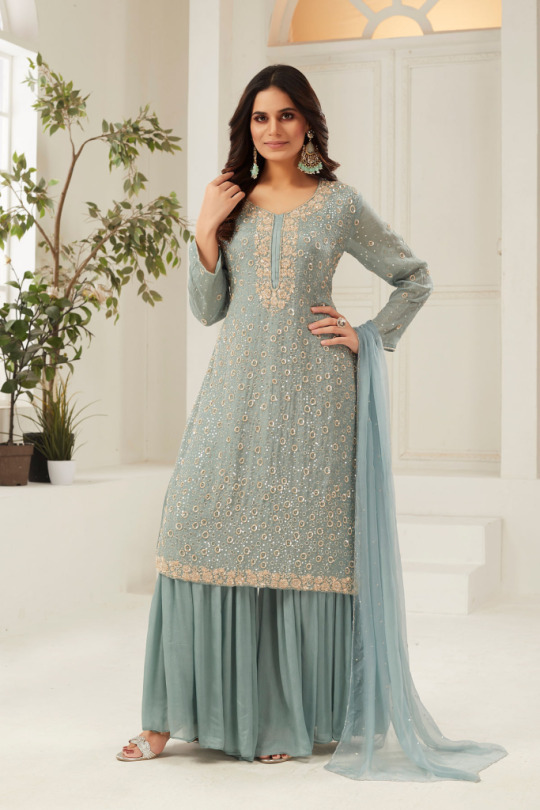
Saree Swagger:
Modern Drapes:

a. Contemporary Draping Styles:
Traditional designer saree drapes like the Nivi style or the Bengali drape are being reinvented with modern twists. Experimental pleats, quirky twists, and unconventional pallu placements have become a common sight, allowing wearers to express their creativity and individuality.
b. Fabric Innovation:
The traditional silk sarees are making way for lightweight fabrics like georgette, chiffon, and organza. These fabrics not only enhance comfort but also provide a fresh and breezy look. Handloom sarees from different states are gaining popularity, promoting the rich craftsmanship of Indian weavers.
c. Fusion Styling:
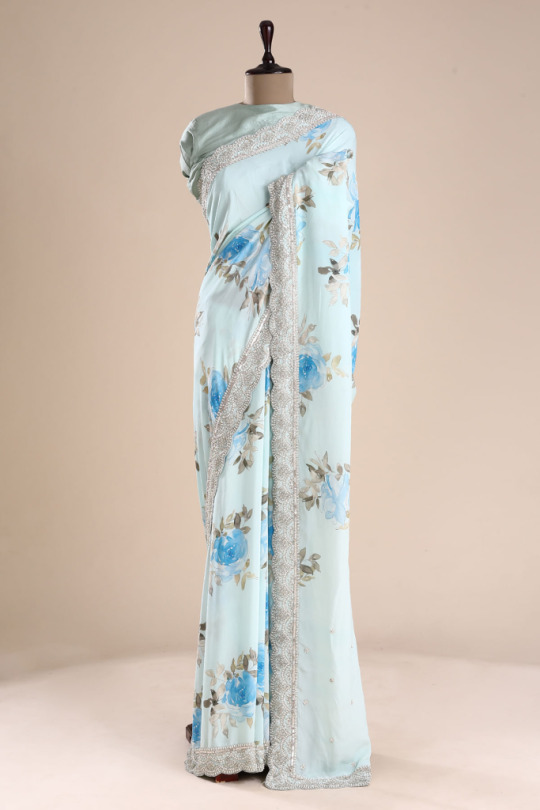
d. Statement Blouses:
The blouse, once a modest accompaniment to the saree, has now become a canvas for artistic expression. Elaborate embroidery, intricate patterns, and bold designs transform the blouse into a statement piece that complements the elegance of the saree.
e. Contemporary Jewellery:
Traditional jewellery is being reimagined with a modern twist. Kundan, Polki, and temple jewellery are now paired with contemporary designs to create a fusion that effortlessly combines the old and the new.
f. Footwear Trends:
The choice of footwear plays a crucial role in completing the ‘Sari Swagger’ look. While traditional juttis and mojaris are timeless, contemporary styles like embellished sandals and block heels are gaining popularity, adding a modern edge to the overall appearance.
Lehenga Love:
Experimenting with Silhouettes:

a. Asymmetrical Cuts:
Designer Lehengas are no longer confined to the traditional A-line or flared silhouette. Contemporary designers are experimenting with asymmetrical cuts, mermaid styles, party wear designer lehenga and designer silk jacket lehengas. This experimentation adds a modern touch to the traditional ensemble.
b. Vibrant Colors and Embellishments:
Makar Sankranti is a festival of colors, and this is reflected in the choice of lehenga colors. Vibrant hues such as mustard, turquoise, and emerald green dominate the designer festive lehenga palette. Intricate embellishments like mirror work, zari, and thread embroidery further elevate the festive vibe.
Salwar Suits for Women:
Comfort and Elegance:
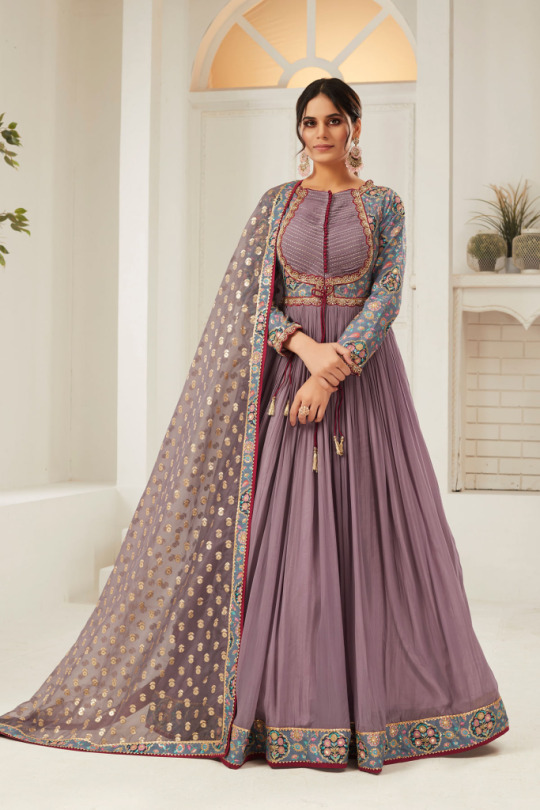
Variety in Designs:

Fusion Styling:
Embracing the trend of fusion fashion, women often pair their ethnic salwar suits with modern accessories. Statement earrings, embellished juttis, or even a contrasting dupatta can elevate the overall look, making it a perfect choice for those who want to experiment with traditional attire.
Men’s Kurta:
Classic Elegance:
Men’s kurtas remain a classic and timeless choice for Makar Sankranti. The simplicity and elegance of a well-fitted kurta, often paired with churidars or straight pants, make it an ideal traditional ensemble. Solid colors or subtle prints are preferred, allowing men to participate in the festivities with sophistication.
Experimentation with Silhouettes:

Incorporating Handloom Fabrics:
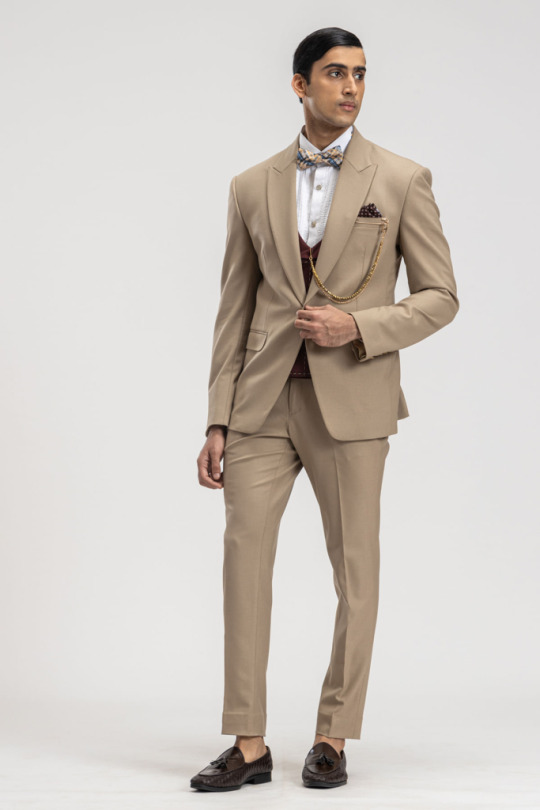
Cultural Impact:
a. Preserving Tradition:
The fusion of Designer Printed Sarees, Party Wear Lehengas, Plus Size salwar kameez, and men’s party wear silk kurtas during Makar Sankranti harmonizes tradition and modernity, defining vibrant festive fashion. It reflects a broader socio-cultural shift towards embracing and celebrating diversity. The amalgamation of traditional attire with modern elements not only preserves cultural heritage but also allows for a dynamic and inclusive representation of Indian identity.
b. Revival of Handloom and Indigenous Craft:
The revival of traditional designer outfits, handloom sarees, and ethnic embellishments in contemporary fashion promotes the preservation of cultural heritage. It encourages a sense of pride in one’s roots and contributes to the sustenance of indigenous craftsmanship.
c. Inclusivity in Fashion:
The acceptance of diverse styles and the breaking of gender norms in fashion demonstrate a growing awareness and acceptance of inclusivity. Fashion is becoming a platform to express individuality, irrespective of gender or cultural background.
Conclusion-
As Makar Sankranti approaches, the convergence of tradition and style takes center stage, epitomized by the fusion of Sarees and Lehengas. This auspicious festival becomes a vibrant canvas for self-expression, where individuals across India showcase a unique blend of cultural richness and contemporary dynamism through their fashion choices.
In this celebratory atmosphere, Samyakk stands as a beacon of choice, offering an extensive collection that includes Kanchipuram sarees, Banarasi sarees, Designer sarees, organza sarees, and an array of lehengas — from Designer and party wear to Bridal lehengas. The brand’s commitment to providing enticing colors, diverse fabrics, and intricate embroideries aligns seamlessly with the festive spirit of Makar Sankranti.
As kites fill the skies, Samyakk invites individuals to soar to new heights of style and individuality, making Makar Sankranti not just a festival but a celebration of fashion, culture, and personal expression. Wish you all readers a very prosperous makar sankranit from team samyakk.
#outfit#makar sankranti#outfit inspiration#casual#style#fashion#menswear#ethnic wear#women fashion#saree#saree online#buy saree online#shop saree#shop online#designer saree#Banarasi saree#banarasi sarees#banarasi lehenga#banarasi georgette saree#banarasi dupatta#banarasisilksaree#kanchipuram silk sarees#indian fashion#sareestyle#sareecollection#sareefashion#womenfashion
0 notes
Text
Authentic Lichi Silk Sarees Online and the Timeless Beauty of Mangalagiri Pattu Sarees with Price
In the world of traditional Indian attire, the allure of authentic silk sarees holds a timeless appeal. Among the plethora of silk varieties, Lichi Silk and Mangalagiri Pattu sarees stand out for their exquisite craftsmanship, rich textures, and cultural significance. This article delves into the world of authentic Lichi Silk sarees available online and explores the timeless beauty of Mangalagiri Pattu sarees, complete with a glimpse into their pricing.
Authentic Lichi Silk Sarees Online: Timeless Luxury Redefined

Lichi Silk: A Heritage of Elegance: Lichi Silk, also known as Muga Silk, is renowned for its natural golden sheen and inherent strength. Originating from Assam, India, Lichi Silk sarees are characterized by their lustrous texture and resilience, making them a symbol of timeless luxury.
Online Shopping for Lichi Silk Sarees: The digital era has ushered in a new way to experience traditional elegance. Authentic Lichi Silk sarees are now available online, offering a convenient platform for enthusiasts to explore and acquire these exquisite pieces without leaving the comfort of their homes.
Craftsmanship and Design: Lichi Silk sarees are celebrated for their intricate zari work, artistic motifs, and the natural shimmer of the silk. Whether adorned with traditional Assamese designs or contemporary patterns, each Lichi Silk saree is a testament to the skill of the weavers and the cultural richness of the region.
Price Range: The pricing of authentic Lichi Silk sarees can vary based on factors such as the quality of silk, intricacy of the weaving, and the presence of elaborate embellishments. While prices can range from modest to high-end, the investment in a Lichi Silk saree is often considered a treasured legacy passed down through generations.
Mangalagiri Pattu Sarees: Weaving Tradition into Elegance
Cultural Heritage of Mangalagiri Pattu Sarees: Hailing from the town of Mangalagiri in Andhra Pradesh, Mangalagiri Pattu sarees are a celebration of traditional South Indian weaving. Crafted with precision and care, these sarees showcase the region's rich cultural heritage and are often donned during auspicious occasions and ceremonies.
Distinctive Features: Mangalagiri Pattu sarees are recognized for their pure silk base, intricate zari work, and the distinctive Nizam border. The use of vibrant colors and the incorporation of traditional motifs create an ensemble that is both regal and culturally significant.
Online Presence and Price Transparency: The digital age has facilitated the availability of Mangalagiri Pattu sarees online, allowing buyers to explore the variety and make informed choices. Many online platforms provide transparent pricing, enabling buyers to understand the value of the saree based on its craftsmanship, design intricacy, and silk quality.
Price Range: The pricing of Mangalagiri Pattu sarees is influenced by factors such as the purity of silk, intricacy of the zari work, and the overall design complexity. While prices may vary, these sarees are often considered an investment in a piece of cultural heritage and are valued for their craftsmanship and traditional significance.
Conclusion:
Authentic Lichi Silk sarees and Mangalagiri Pattu sarees epitomize the grandeur of traditional Indian silk weaving. With the convenience of online platforms, enthusiasts can now explore the richness of these sarees and make informed choices, considering factors like craftsmanship and design intricacy. The investment in these sarees extends beyond mere attire; it is an embrace of cultural heritage and an affirmation of timeless elegance. As the legacy of silk weaving continues, the beauty and significance of Lichi Silk and Mangalagiri Pattu sarees endure, weaving stories of tradition and grace for generations to come.
0 notes
Text
BIHU: OUR CULTURAL IDENTITY

Dear parents/caregivers,
I want to take a moment to acknowledge the incredible work you do for your children. From the early mornings to late nights, you tirelessly care for and support them. As we approach Bohag Bihu, I urge you to reflect on a few important aspects.
Bihu is a festival that unites the people of Assam, regardless of their background. It’s wonderful to see parents dressing their children in traditional attire and encouraging their participation in Bihu dance performances. However, there are additional ways to promote cultural assimilation. Consider the following:
Research suggests that plurilingualism (using multiple languages) is beneficial for children. Multilingual kids experience cognitive advantages, such as improved mental processes, enhanced focus, memory retention, and multitasking abilities. Speaking multiple languages can also have long-term benefits for brain health. Therefore, teaching your child Assamese, in addition to other languages spoken at home, can have significant advantages.
While extracurricular activities like learning music and dance are encouraged, don’t forget to introduce your child to traditional Assamese instruments such as khol, pepa, or gogona. Enroll them in Bihu workshops and expose them to Sattriya, the classical dance form of Assam. Teach them about prominent figures in Assamese society who have shaped the state’s culture. It would be wonderful if your child could sing a Borgeet or Jyoti sangeet, dance Bihu, or play an Assamese instrument. These skills will contribute to their identity and pride when they venture beyond Assam for higher studies or work.
While Hollywood movies may captivate children, consider taking them to watch child-friendly Assamese movies occasionally. This helps them develop proficiency in their mother tongue and supports the struggling Assamese film industry.
If your child shows an interest in cooking, enroll them in cookery classes that teach traditional Assamese recipes like pitha or maasor tenga. This not only enhances their culinary skills but also fosters an appreciation for our rich culinary heritage.
These are just a few things to reflect upon during the Bihu holidays. I won’t take up any more of your time, as I’m sure you have plenty of preparations to make. Enjoy the festivities and have a joyous Bohag Bihu celebration!
To read the full blog click here
0 notes
Text
Trending Lehengas for this wedding season
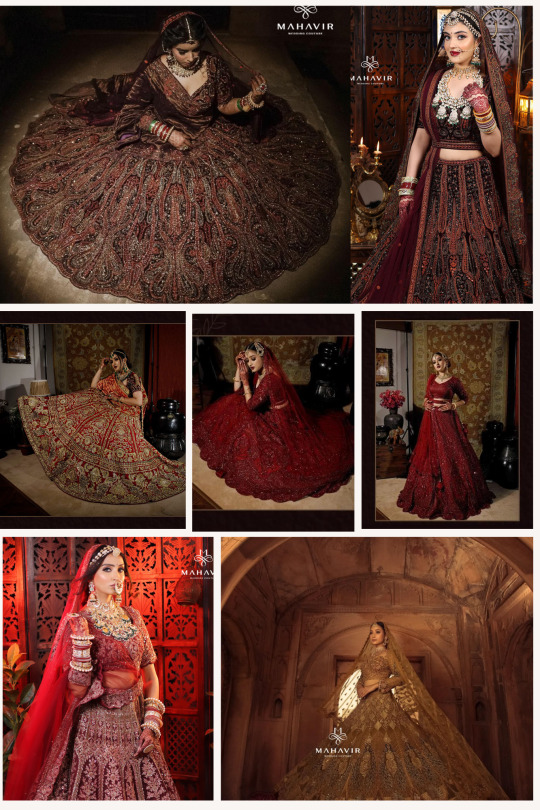
The woman of the hour may find that lehengas, which are expensive yet stylish, are the most gorgeous clothing to wear on her special day.
2022 Winter weddings are just around the corner and if you are invited to one or are the winter bride, then get ready to have some fun shopping with the Mahavir wedding couture.
While the world of bridal design is booming with ideas for optional attire, there is nothing better than a beautiful lehenga choli for enormous Indian weddings. Trending Lehengas are possibly the most glamorous clothes for the woman of the hour to wear on her big day because they are rich yet fashionable. In fact, the colder months of the year are indisputably the least popular times of year for marriage. However, in general, a wedding during the winter is actually unexpected.
There is an overwhelming sense of fascination and magic during the whole season. Additionally, the festive mood at various seasons of the year might give your special day a sense of community.
If you want to dress up for your wedding but are concerned about the colder winter weather. You've come to the right spot if you're looking for a trending lehenga for winter wedding inspiration to up your design game for the big day.
Nearly every state in India has its own unique lehenga embroidery method, giving them a unique appearance and feel. Lehenga can thus be worn by women of all ages—younger, older, and middle—and for any occasion—a party, a wedding, a festival, etc. These lehengas are lightweight and practical for wearing in all seasons.
Lehenga choli with sequins
Having a sequin lehenga choli on is a joy because of the lovely glittering impression it creates. Although there are other works with shimmer that are as impressive. Lehenga cholis with sequin embellishments are striking at first look. For brides with a more understated sense of fashion, search for a sequin lehenga that complements your preferences and keeps you on trend.
Lehenga with no hemming.
A straight-cut lehenga has less of a flare at the base than the typical lehenga choli, giving it a more couture appearance. The straight cut is one of the most popular lehengas designs since it flatters all body types. A designer crop top blouse can be paired with a lehenga with a straight shape.
Assam and Muga Silk Lehenga
Muga, one of the rarest kind of silk, is exclusively produced in Assam. The silk has a light yellow colour that Assamese people refer to as "MUGA." Rich floral and pattern embroidery adorns this lehenga. These days, you may get this lehenga in a number of colours, including Mekhola Chadar. It is the traditional bridal outfit for an Assamese bride.
Sarees from Kanchipuram or Kanjivaram
The Kanjivaram saree, the most beautiful bridal garment, is available in Kanchipuram, Tamil Nadu. Each saree has a unique, colorful, and exquisite pattern. These sarees with their gold and silver thread embroidery are more akin to an investment when paired with the proper blousjewelryellery.
Ingrid Banarasi lehenga
If you're a contemporary bride searching for something light but timeless, this georgette Banarasi is ideal for you. For modern brides, they come in a range of colors, from pastel shades to deep hues, and are easy to drape. Combine with beautiful jewelry made of gold or diamonds.
To know more visit:www.mahavircollection.com/
Address : 478, katra asharfi, chandni chowk, delhi-6
Contact no. 9599060478
Instagram:-https://www.instagram.com/mahavirweddingcouture/
Facebook:-https://www.facebook.com/mahavircollections
#bride#bridetobe#dulhan#instabride#mua#delhimua#reels#wedding#weddingday#weddings#trending#modernbride#lehenga#embroidery#shaadi#dday#southasianweddings#couture#luxurywedding#bigfatindianwedding#bigfatwedding#weddingdecor#weddinginspiration#weddingwear#lehengacholi#wedmegood#weddingplz#weddingplanning#weddinglehenga
1 note
·
View note
Text
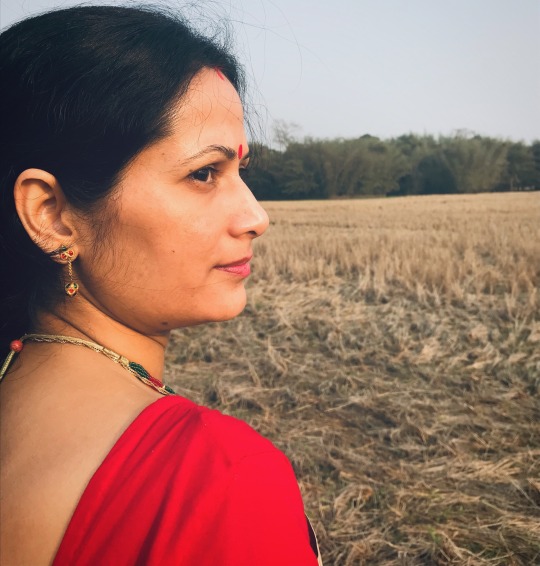
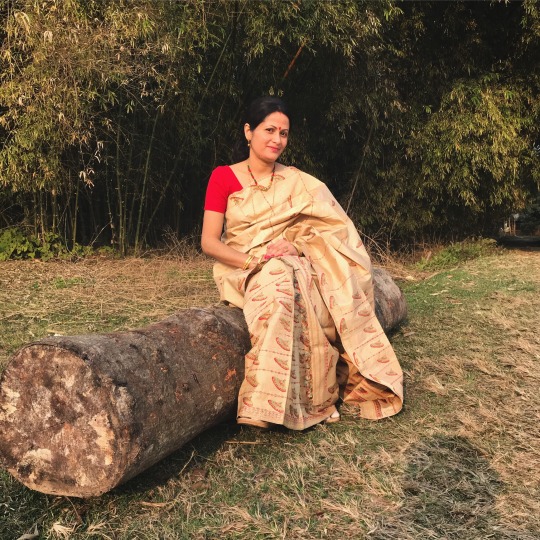
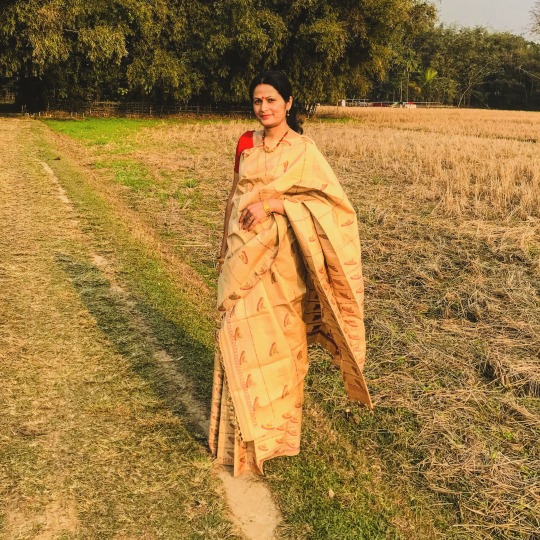
I remember how irritating it was when she used to get all dressed up and nag me to the death to click pictures... When I look back these are memories I wanna live and cherish forever and ever again...
1 note
·
View note
Text
.
#nm just sitting in a south indian restaurant where waiters are in assamese attire and theyre playing punjabi music#everything is so chaotic in here bye#mayri
6 notes
·
View notes
Text
Unveiling the Mystique: Top 5 Places to Visit in North East India
Introduction:
Nestled amidst the lush green landscapes and undulating hills, North East India stands as a treasure trove of natural beauty and cultural diversity. From the breathtaking vistas of the Himalayas to the vibrant traditions of its indigenous tribes, this region beckons travelers with promises of enchantment and discovery. In this blog post, we will embark on a journey through the top five must-visit destinations in North East India, each offering a unique blend of natural wonders and cultural richness.
Gangtok, Sikkim: The Gateway to the Himalayas
Our exploration begins with the charming capital of Sikkim, Gangtok. Tucked away in the eastern Himalayan range, Gangtok boasts panoramic views of snow-capped peaks, cascading waterfalls, and serene monasteries. One cannot miss the iconic Nathula Pass, a high-altitude mountain pass connecting India and China. Visitors can revel in the serene ambiance of the Enchey Monastery, a sacred Buddhist site, or take a cable car ride for a bird's-eye view of the stunning landscapes.
For those seeking adventure, Gangtok offers trekking opportunities in the Yuksom Valley and the famed Kanchenjunga Base Camp. The town's vibrant markets and delectable local cuisine add a touch of culture to the Himalayan experience, making Gangtok a perfect blend of natural beauty and cultural immersion.
Kaziranga National Park, Assam: A Haven for Wildlife Enthusiasts
Next on our list is the world-famous Kaziranga National Park in Assam, a UNESCO World Heritage Site and home to the endangered one-horned rhinoceros. Spread across the floodplains of the Brahmaputra River, Kaziranga is a biodiversity hotspot, teeming with diverse flora and fauna. Visitors can embark on thrilling jeep safaris or river cruises to witness the majestic rhinos, elusive tigers, and a plethora of bird species.
Apart from its wildlife, Kaziranga offers a unique opportunity to explore the vibrant Assamese culture. Traditional Bihu dance performances, visits to ethnic villages, and savoring Assamese delicacies make for a holistic travel experience. Kaziranga National Park stands as a testament to the harmonious coexistence of nature and culture in North East India.
Shillong, Meghalaya: The Abode of Clouds
Known as the "Scotland of the East," Shillong in Meghalaya is a captivating hill station adorned with rolling hills, pristine lakes, and cascading waterfalls. The city's unique blend of colonial architecture and Khasi tribal culture adds to its allure. Umiam Lake, a picturesque reservoir surrounded by lush greenery, offers boating and water sports, providing a serene escape for nature enthusiasts.
The living root bridges of Cherrapunji, just a short drive from Shillong, are a marvel of indigenous engineering. These bridges, crafted from the roots of ancient rubber trees, showcase the symbiotic relationship between man and nature. Shillong's vibrant street markets, showcasing local handicrafts and traditional attire, provide a glimpse into the rich cultural tapestry of Meghalaya.
Majuli, Assam: The World's Largest River Island
Tucked away in the mighty Brahmaputra River, Majuli is a serene and mystical island, often referred to as the cultural capital of Assam. This idyllic destination is a melting pot of Assamese art, dance, and spirituality. Majuli is home to numerous Vaishnavite monasteries or 'satras,' where visitors can witness traditional dance performances, mask-making, and age-old crafts.
The island's ethereal beauty is enhanced by its lush landscapes, wetlands, and riverine ecosystems. Birdwatchers and nature enthusiasts will find solace in Majuli's rich avian biodiversity. To experience the island's cultural vibrancy, plan your visit during the Raas festival, where locals celebrate with traditional music, dance, and boat races.
Tawang, Arunachal Pradesh: A Spiritual Odyssey in the Himalayas
Our journey concludes with Tawang, a serene town nestled in the remote mountains of Arunachal Pradesh. Tawang is renowned for its monastic complex, including the Tawang Monastery, one of the largest in India. Perched at an elevation of 10,000 feet, the monastery offers breathtaking views of the surrounding valleys and mountains.
Tawang's spiritual ambiance is complemented by the beauty of the Sela Pass, a high-altitude mountain pass adorned with frozen lakes and snow-capped peaks. Adventure enthusiasts can explore the Gorichen Peak or indulge in trekking to the Nuranang Falls. Tawang's tranquil landscapes, vibrant Buddhist culture, and historical significance make it a must-visit destination for those seeking a spiritual retreat in the lap of the Himalayas.
Conclusion:
North East India, with its untamed beauty and cultural diversity, offers a travel experience like no other. From the majestic Himalayas to the vibrant traditions of indigenous tribes, each destination on this list provides a unique blend of nature and culture. Whether you seek adventure, wildlife encounters, or spiritual solace, North East India beckons with open arms, inviting you to explore its enchanting landscapes and unravel the mysteries that lie within.
If you want to rent a self drive car in Guwahati then GoRidez is the best option.
0 notes
Text
Saree Ideas for Wedding Season

The saree, which is a nine-yard-long garment is indeed an epitome of elegance and class. In fact, it's hard to come across women who have not been smitten by its timeless grace and enchantment. No other outfit can ever beat the intricate and delicate art work of this piece of garment. This delicate and elegant attire is undoubtedly the best outfit choice for a wedding event.
Almost every state in India has its signature marriage sarees that makes every bride look breathtakingly beautiful in no time. Not only the bride but if you are one who has to attend a wedding, then a saree should be a must-try option.
Available in a plethora of designs, colors and fabrics, sarees - when draped to perfection - can enhance your beauty manifolds… in a sensual yet modest way.
Below are few stunning options of saree that you can try and find out why this nine yards of elegance can make for an excellent wedding attire.
Banarasi saree from Varanasi- It is well known that Banarasi weaves always makes it to the wedding wardrobe collection of the Bollywood celebs. To accentuate your look further, tie your hair into a bun and add a gajra (also called flower garland). For jewellery keep it one piece- either choose a heavy polka/kundan neckpiece or a traditional statement earrings.
Kanjeevaram saree from Tamil Nadu- The pride of South India, Kanjeevaram silk sarees feature intricate aesthetics that are woven within them with fine zari. Royal borders, vivacious colors, and decorations of various Indian cultural elements on it, give Kanjeevaram Saree an ornate aura. The saree is usually coupled with gold jewelry to compliment the regal look of Kanjeevaram.
Bandhani Saree from Gujarat- This saree is a treat to the eyes because of its simplicity; with a minimal touch of sparkles & glitters. You can wear it to a ‘mehendi’ function… as it is lightweight and easy to carry, you can easily bust-a-move. Wear a choker neckpiece and put on some light make-up (you can don a pair of fancy shades for an edgy look). And, your look is ready.
Chikankari saree from Lucknow- Chikankari - a fabric stitched with sophistication, has been the pride of the city of Nawabs (Lucknow) since Mughal times.
With heavy embroidery such as gota, sequin and beads on neutral and soothing colors like beige, taupe, ivory, etc., this saree embodies minimalism alongside sophistication. soothing colors, these sarees can be worn on any day, time and occasion. Style it with high-bun or straight hairstyles and put on jhumkas, then experience the magic.
Muga saree from Assam- The Muga silk which is produced only in Assam, is exquisitely beautiful and unique as it comes from the cocoons of muga silkworms. With a naturally lustrous gold sheen this saree is coveted around the globe by both men and women. The best thing about this saree is that it’s shine improves with every wash making it a timeless piece. Assamese jewellery will go best with this classic saree; making you the showstopper at the next festive occasion.
If you want to go all chic and modern, then opt for a Floral organza saree for a day function and a Sequin saree for cocktail or reception. For the first option, choose light-weight jewellery like- a trendy rose gold earrings with a stunning bracelet. For the second, pick a stunning pair of stone earrings to add glamour.
1 note
·
View note
Text
Everything you need to know about the exceptional weaves from India’s north east – VOGUE India
To say that craft is having a second is an understatement. Khadi and Benarasi textiles have grazed runways and designers like Manish Malhotra and Sabyasachi Mukherjee use chikankari and block printing often of their work. Even in the pandemic or maybe, particularly in the pandemic, aware customers are placing their cash the place their mouth is by supporting the scores of weavers and craftsmen throughout India whose livelihoods have been affected. Meanwhile manufacturers are reinventing the wheel to make craft merchandise related to 2020 from Maheshwari cotton masks (try India Circus’ model new collaboration with REHWA society) to block-printed lounge put on (Pinklay’s jewel tones having us lusting).
Having stated that, the dialog about craft tends to give attention to the North and West of India. For occasion, Benarasi weavers have gotten an enormous push from the authorities in the previous few years, chikankari embroidery has the patronage of Bollywood’s elite and block prints have penetrated not simply Indian but in addition worldwide markets. But ask a style lover and even pupil about which textiles are fashionable in India’s North East they usually’ll probably be stumped for a solution.
According to Nixon Bui, a Copenhagen-based dressmaker who hails from Arunachal Pradesh, cultural influences play a task on this. “The way I see it is that fashion reflects pop culture, and in India, pop culture is to a great extend about the Hindi cinema,” says Bui. “If the northeast wants to be part of the mainstream fashion, we have to integrate our designs into Indian mass fashion. There are also other reasons like lack of awareness from mainland India about the northeast people and culture. Geographically we are a bit cut off from the rest of India, which adds to business practice difficulties too.”
Irrespective, the eight states of Arunachal Pradesh, Assam, Manipur, Meghalaya, Mizoram, Nagaland, Sikkim and Tripura have a wealth of crafts that deserve each recognition and rewards.
The silk story
The hottest textile that individuals do know of from this area is the ahimsa silk—a cruelty-free material which doesn’t hurt the silkworms producing the textile. The major manufacturing centre is the village of Sualkuchi in Assam and right here they name it eri silk (it has completely different names in numerous states). This “silk village” additionally makes muga—a long-lasting silk which has a golden sheen and mulberry silk which is the very best quality silk cloth in the world. These textiles are used to make saris and mekhela chador, the conventional costume of Assamese ladies and have been woven in Assam for generations.
Assamese silks usually have vibrant hues—suppose electrical blue, parrot inexperienced and pink. The woven motifs pop nearly like embroidery and are primarily nature-impressed though just a few additionally depict conventional ornaments. For occasion, the Kaziranga fashion weave has rhinos, deer and birds from its namesake nationwide park, the widespread Karbi fashion has two birds sitting on a tree, moura is a peacock and gach is a tree motif. Joon bari is impressed by an Assamese necklace and king Khap fashion weaves are based mostly on the erstwhile Ahom dynasty. Designer Anita Dongre has used eri silk in a few of her collections and there’s additionally a sluggish style label known as Amoh began Aanchal Goyal which makes use of Assamese weaves completely to make co-ord units, joggers and and midi attire.
The identical cloth is known as Ryndia in Meghalaya and Daniel Syiem is a well-liked designer in Shillong who has been utilizing it since the early 2000s. Syiem had the unrealised dream of turning into a dressmaker whereas he was managing a nightclub in Shillong. One of his shoppers, Denny was an officer in Meghalaya’s sericulture division and he launched Daniel to weavers from the poor Ri-Bhoi district the place solely half the inhabitants is literate. Ryndia was as soon as widespread all through the North-East however ladies weavers started to abandon the conventional handloom due to financial hardships.
“When I went to meet weavers, I forged a very special connection with them,” says Syiem. “I knew this is what I wanted to do. My father and grandfather were huge social activists and so for me, the path into fashion had to have a meaningful impact on my community. For me the fabric is not just piece of fabric, it represents the people who’ve poured their love, imagination and hard work into creating it. A lot of the weavers I work with are single mothers and through weaving they’ve been able to take of their family and raise their children.”
Syiem obtained his first worldwide style present in Thailand in 2005. He has been a champion of sustainable style earlier than it turned stylish and widespread. His label has proven at LFW, London and New York City; there’s one line devoted to Ryndia and one other pret line which makes use of natural materials from throughout India.

Jigmat Norbu who runs a sustainable style label by the title of Jigmat Couture in Ladakh additionally makes use of ahimsa silk in his work. “The main textile in Ladakh is wool, we don’t produce our own silk but it is a big part of our wardrobes and visible culture. The sash is a type of colourful, silk belt that’s worn on funerals, weddings and important occasions and we procure this silk from the North East.” Norbu has educated his prospects about sustainable style and therefore will get a whole lot of curiosity for the ahimsa silk he makes use of. He has additionally based a museum of textiles in Leh which has beautiful archives and bodily relics of the historical past of silk from the North East, which was a part of the Silk Route.
The loin looms
In the previous few years, one other textile is being resurrected by designers from the area. Handloom cloth made on the indigenous loin loom can be beginning to acquire visibility by way of their work. The loin loom is a really primary sort of bamboo loom is also called a again strap loom as a result of it has a again strap with a steady horizontal wrap. It produces slender strips of fabric with no more than 18 inches of completed width. To obtain an even bigger width, completely different strips are stitched collectively. This loom crops up all India’s North East from Manipur to Nagaland to Arunachal Pradesh to Tripura.
The woven patterns and hues differ from tribe to tribe and have symbolism and that means of their designs. For instance, in Nagaland the shawls worn by women and men are largely pink, black and white and may look comparable to untrained eye. However, the patterns are distinct. For occasion, the Ao Naga tribe has a warrior scarf with symbols on its central white band representing valor, energy and prowess. In Manipur, the phaneks (lungi-like garment worn by ladies) have shamilami or a mix or woven motifs and complex embroidery. Phanek designs are peculiar to every tribe and every wears particular designs solely. The morang phee temple design is extra generic and may be worn by anybody.
“You know, I started my fashion journey in 2008 but it’s not until 2018 that I used fabric produced on the loin loom,” says menswear designer Jenjum Gadi. “The strange thing is that we have a culture of growing and weaving our own cotton on this very loom in Arunachal Pradesh where I’m from. I saw my mom do it as a child but I never thought anything special of it. It was only in 2018 that I travelled to Dimapur, Nagaland as part of FDCI’s Celebrating The Maker program. I saw the weavers working on the loop and realised that despite being deceptively simple, this loom truly special. It is one of the oldest looms in India and represents the history and culture of this region.”
This distinctive tradition of rising cotton in your yard after which spinning and weaving it into material has been occurring for generations. While it’s simple to purchase cloth from a retailer, the ladies in these states proceed weaving to hold their legacy alive by way of this course of.
© Courtesy Margaret Zinyu

Challenges and options
The family handloom custom in India’s North East is extraordinary certainly however it additionally presents distinctive issues. Since it is vitally arduous to scale manufacturing we don’t see an excessive amount of of it in mainstream Indian style. “The loin loom produces a very special textile,” says Margaret Zinyu, founding father of Woven Threads—a house textile label that works with indigenous materials from Nagaland. “But it lesser used and lesser known especially in the rest of India. When we talk about regular handloom, it can produce seven metres of fabric in a day while loin loom can produce only two metres because it so labour intensive. That’s definitely a challenge.” In addition to this, the ladies who do the weaving additionally farm and take care of the home so most of them should not full time weavers. This furthers provides to the downside of accelerating manufacturing.
Aratrik Dev Varman is of Tripuri heritage and runs a label known as Tilla in Ahmedabad. In 2018 he showcased a group of loin loom weaves from Tripura at LFW as a part of the British Council’s Crafting Futures program. In particular he was researching risha—a woven breast material utilized in Tripura which is often eight inches extensive and 40 inches lengthy. It was historically used to cowl the breasts however now’s a extra symbolic article of clothes often given to the chief visitor at an necessary event.
© Aratrik Dev Varman, Tilla

“They’re beautiful, narrow pieces of fabric woven as a single piece on the loin loom” says Varman. “I come from the area so I’ve been collecting these rishas for a long time. However, the motifs you currently find in the market are quite different from the ones that were traditionally woven. Luckily during my one-year research project, I was able to amass about 40 of each original, vintage pieces from my family and also my travels within Tripura.”
The rishas usually are available in color combos like purple and inexperienced or yellow, pink and white. Traditional motifs embrace khulphang which is a cotton plant, takhumtoi which depicts geese eggs and mutaiwa sirik which is impressed by carved bamboo ornament. He plans to publish this assortment as a 200+ web page e-book on the design language in Triputi weaving. “We’ve used 1:1 photography so you can see the motif in real scale,” Varman says. “Documentation is the step to engage with the culture of a community that’s been so far removed from the rest of India.”
Bui feels what’s most necessary for North East crafts to acquire traction is a unified imaginative and prescient. “We from the Northeast have to set examples for ourselves and also tell the world what we stand for. Is it the value of traditional practices, is it the intricate exoticism, or is it green-living? We need to know what we are offering to the world, believe in it, and do it really well. As a designer, I stamp the Northeast signature on the pieces I create. Highlight the good and bad sides of the region through the language of art so that growth prevails. And of most importance, the audience at large should be open minded to different types of arts and crafts. Be a conscious buyer.”

Also learn:
Why weaving a Jamdani sari is a real labour of affection
The unimaginable historical past of the conventional Parsi Gara sari
What offers folks embroideries from Kutch and Sindh its distinct qualities
The post Everything you need to know about the exceptional weaves from India’s north east – VOGUE India appeared first on SareeBasket.
from WordPress https://sareebasket.com/everything-you-need-to-know-about-the-exceptional-weaves-from-indias-north-east-vogue-india/
0 notes
Photo

*Sketchy notes on* Day 2, prompt : Gamosa. Gamosa is a piece of handloom cloth traditionally woven and worn by the folks of Assam. It has been there since the time of Ahom Kingdom and is used in various walks of life starting from culturally significant occasions, wrapping scriptures in Naamghor (prayer hall), in the magnificent festival of Bihu, as a part of daily household attire, by farmers, as a token of love and respect to visiting guests and many more. From being a piece of tradition it has ventured out in the fusion trend of fashion too! This illustration above is a visual depiction of an Assamese song that still rings in my ears since my childhood years... "Mon hira doi cycle nohoi tilinga... " Still can't get over it!! . . . #sketchynotes #randomthoughts #profoundcraziness #illustration #art #drawing #doodle #painting #blackandwhite #ink #sketchbook #sketching #inktober #inktober2020 #bongtober2020 #assam #northeast #india #gamusa #assamese https://www.instagram.com/p/CF4kmoqAybR/?igshid=1wjdjvknnxx5u
#sketchynotes#randomthoughts#profoundcraziness#illustration#art#drawing#doodle#painting#blackandwhite#ink#sketchbook#sketching#inktober#inktober2020#bongtober2020#assam#northeast#india#gamusa#assamese
0 notes
Photo

Mekhela Chadar is the traditional attire of Assam. Being from Assam I have got quite a few of them. This one is from a #handloomshop in Guwahati, Assam. As this colour was trending a lot at that time so I thought of getting one for me too. 😁 I love this one and had paired up with #assamese traditional ornaments known as #gohona . Ending up #21sarees21days challenge for National Handloom Day with my 17th attire. @thebohobaalika @lipstik_in_the_city @sareesaatsamundarpaar . . #handmadeinindia #prebuylocal #prebuyhandloom #handloom #handmade #weavesofindia #craftscouncilofindia #sareelove #lovedrapingsaree #21days21sarees2 #paat #mekhelasador #bongbeauties #assameseattire #guwahatifashion #noidadiaries #sareeswag #assamhandloom #newdelhi #nationalhandloomday #bloggerstyle https://www.instagram.com/p/CDmIKhCgl38/?igshid=14gex2iyng21z
#handloomshop#assamese#gohona#21sarees21days#handmadeinindia#prebuylocal#prebuyhandloom#handloom#handmade#weavesofindia#craftscouncilofindia#sareelove#lovedrapingsaree#21days21sarees2#paat#mekhelasador#bongbeauties#assameseattire#guwahatifashion#noidadiaries#sareeswag#assamhandloom#newdelhi#nationalhandloomday#bloggerstyle
0 notes